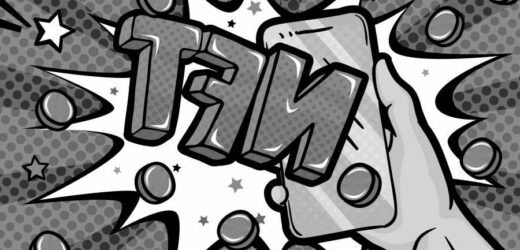Opinions expressed are solely those of the author and do not reflect the views of Rolling Stone editors or publishers.
Over the past few months, it’s been impossible to ignore the fervor around NFTs. Artists from Grimes to Shawn Mendes to Halsey have experimented with these digital collectibles, with some of them raking in millions of dollars.
But there’s also lots of skepticism. From an SNL skit to reports that the NFT market has dropped by 90 percent, lots of folks are questioning if NFTs are a fad or an emerging gamechanger. Many artists and creators are still trying to wrap their heads around the concept and some early best practices for the first wave. As my team gears up to launch its own NFT platform later this summer, we’ve received a lot of the same questions from artists. For instance, we’re experimenting with social tokens — personal cryptocurrencies that can function as a modern “fan club” or mini-economy.
Related Stories
From Korea to the World: Chung Ha Readies Her Next Big Move
Courtney Barnett Turns Over a New Leaf
Related Stories
Willie Nelson: 20 Obscure But Awesome Songs
'Silence of the Lambs': 'It Broke All the Rules'
Below, I’ll address some of the most common questions we get around NFTs:
I’ve heard a bit about NFTs but what exactly are they?
NFTs are digital collectibles: They can be art, music, items from video games or any form of digital media. They’re tagged with unique information that can be verified on a blockchain that indisputably proves authenticity and ownership. If you buy a Warhol print, that’s like owning the .jpeg file. But if you have the paperwork proving you own the original, that’s the value that an NFT provides.
Is this just a trend? Will NFT prices rebound?
From my vantage point, the eye-popping million-dollar NFT sales a few months ago have most likely peaked for now but NFTs are likely here to stay. It’s worth becoming familiar now because they will continue to evolve and could become more common. Instead of thinking about NFTs as a one-and-done, think about offering several copies at a lower price point that your fans can more easily opt-in.
Some of the crazy multi-million dollar prices we’re seeing are definitely not sustainable, so if you’re planning to jump in now, you should think more about why your fans would want them (and what they do) than how much money you can make from them.
How do I make money off of this/how much can I charge for this?
NFTs allow you to create digital items with a limited supply; this scarcity (and your brand) is what gives them value. You can set the price yourself and see if people will buy them or let the market dictate the price through an auction or open sale. If an NFT you create and sell is then re-sold, you may also have the opportunity to earn royalties on those subsequent sales.
Despite the potentially staggering amount of money that you can make with an NFT sale, we tell artists and anyone else thinking of launching an NFT to not think of it as a cash grab. There should be a reason for someone to own your NFT apart from the fact that it might go up in value. We find that the most successful artists and creators are looking to build a long-term connection with their fans — not just turn a quick profit.
The Rolling Stone Culture Council is an invitation-only community for Influencers, Innovators and Creatives. Do I qualify?
I heard NFTs are really bad for the environment. Is that true?
Minting an NFT directly on the Ethereum blockchain (the most popular blockchain for NFTs) requires a large amount of electricity. In general, creating large amounts of electricity can result in significant CO2 emissions. Well aware of its energy consumption issue, Ethereum is planning a massive upgrade that will significantly reduce its electricity consumption. Other blockchains are already deploying technology that doesn’t require massive energy usage: NBA Top Shot uses the Flow blockchain.
While creators wait for Ethereum’s upgrade, we’re seeing a demand for eco-friendly options. Some platforms mint and store NFTs on what are known as “sidechains” (i.e., offshoots of the main Ethereum blockchain) that dramatically reduce the electricity consumption down to virtually zero. When considering an NFT launch, ask whether the platform operates directly on Ethereum, via a sidechain or on another blockchain.
Can’t someone just copy and paste this? What are the copyright laws?
It’s possible to copy the media file from an NFT the same way you can produce a print of original artwork. There are millions of copies of the Mona Lisa, but only the original is protected in the Louvre. What fans are paying for is authenticity.
In general, artists shouldn’t create an NFT from a piece of media that is not original or that they do not own the rights to. However, I wouldn’t be surprised if new copyright laws develop specifically around blockchain. For now, the market seems to be a pretty good arbiter of authenticity.
Where is this all headed?
While we’ve only recently seen interest in NFTs crystalize, it’s been a long time coming that crypto would become an integral part of the entertainment industry. The economics of crypto favor artists over the big tech-owned social media platforms that have been profiting from their labor over the past decade.
The biggest difference between the NFTs we’re seeing today and the ones of the future is how fans will use them. Imagine if you bought a limited-edition vinyl that came with an NFT that you could use as a backstage pass for your favorite artist’s next tour. Or maybe you buy an artist’s merch that comes with an NFT that puts you at the front of the line for the next ticket release.
Artists, record labels and tech companies are just cracking the surface of possibilities. Artists are realizing that integrating crypto into their fan experience can go beyond NFTs. NFTs aren’t the endpoint for musicians; they’re just one piece of the crypto puzzle.
Source: Read Full Article


